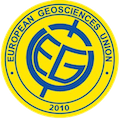 |
30 years of geochemical monitoring of thermal waters and fumaroles at La Soufrière volcano (Guadeloupe, Lesser Antilles)
Benoit Villemant, Jean-Christophe Komorowski, Agnès Michel, Gilbert Hammouya, Olivier Crispi, Céline Dessert, Jean-Bernard de Chabalier, François Beauducel
European Geosciences Union, General Assembly 2010, Vienna, Austria, 02-07 May 2010, talk.
|
Abstract.
A permanent and well developed hydrothermal system at la Soufrière of Guadeloupe is evidenced by numerous thermal springs and an intermittently active fumarolic field. This activity is concentrated in the summit area and around the base of the dome which has been emplaced during the last magmatic activity in 1530 AD. The historic activity, recorded since 1635, consists in several phreatic eruptions. The most violent of them occurred in 1797-98 and in 1975-77. During the last crisis, the summit and flank fumarolic activity was sustained then it rapidly migrated to more peripheral zones and concentrated in the SE sector were it remained residual since 1983. The summit fumaroles were progressively reactivated in 1992, with a persistent high flux of HCl-rich H2O vapour since late 1997.
Major element and halogens (F, Cl, Br, I) contents of thermal waters, collected monthly since 1979, and of fumarolic activity provide a unique geochemical time series to study the interaction between volcanic activity and hydrothermal systems.Two main activity periods are recognised on the basis of thermal springs compositions: the first one lasting up to the 90's is characterised by large variations in halogen contents independent on rain fall regime and the second one is characterized by lower halogen contents which vary periodically with rain fall regime. The halogen contents of fumaroles measured since the reactivation of the summit activity also display short term variations primarily correlated to rain fall regime.
These data are interpreted as a retarded record of magma degassing pulses dispersed into the hydrothermal system. Using advection-dispersion transport models, we reconstruct the time-series of degassing pulses since ~1970 and show that it correlates with the seismic records. The 1975-1977 seismo-volcanic crisis at La Soufrière is thereby interpreted as the result of magma intrusions emplaced at shallow depth (~3 km) during the years 1971-1976 and that degassed in a pulsatory regime whose intensity progressively decreased with time. This imprint of this degassing is at present vanishing in thermal springs, but the recent recrudescence of fumarolic and seismic activity could be the result either of the sealing of the surficial hydrothermal system allowing the direct transfer of volcanic gases to summit fumaroles or the injection of a new magma intrusion at depth. A general model for magma intrusion emplacement, its crystallisation degassing regime and the gas transfer to the surface through hydrothermal system is proposed.
Related papers: [Beauducel & Besson, 2008]
